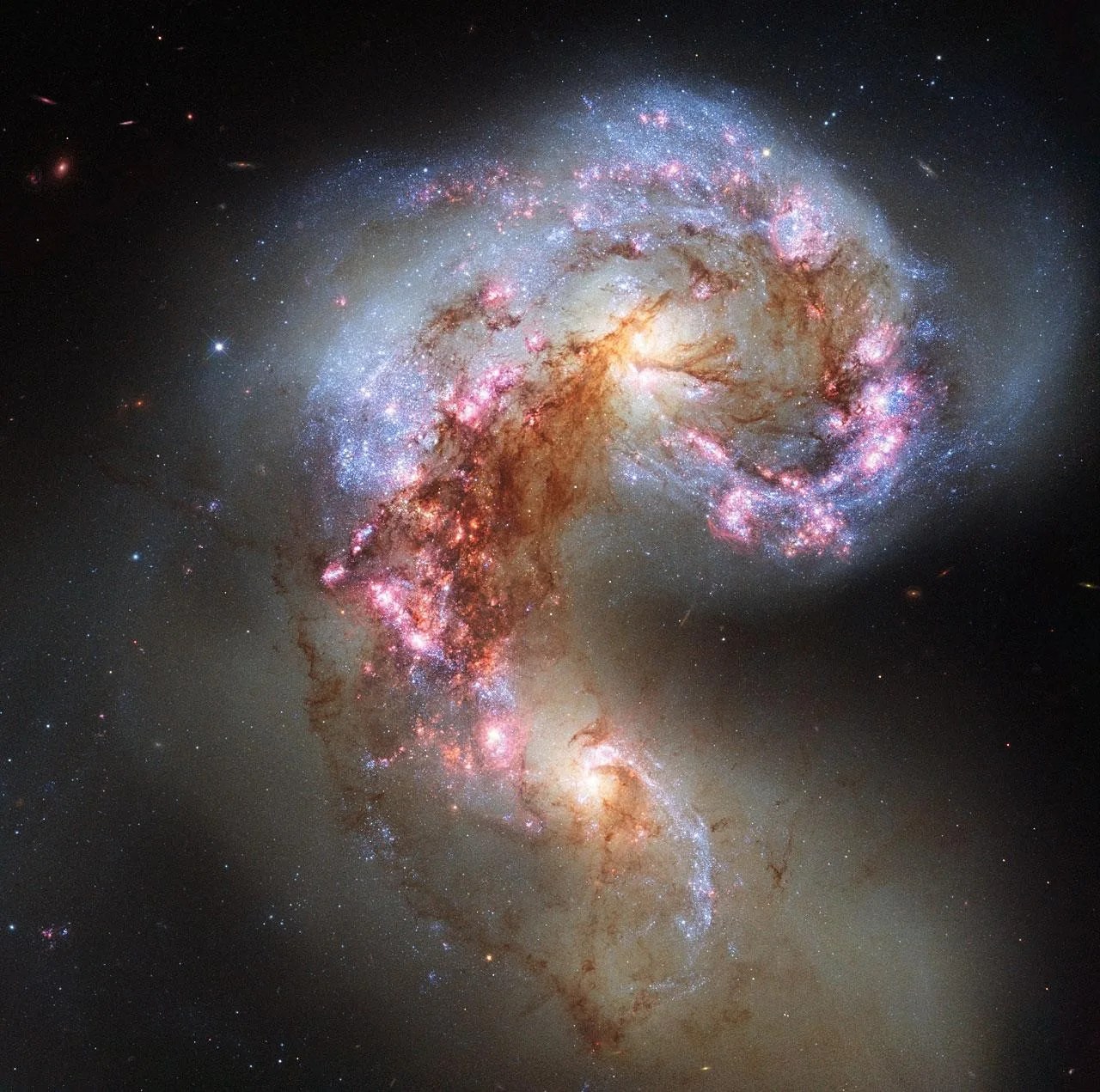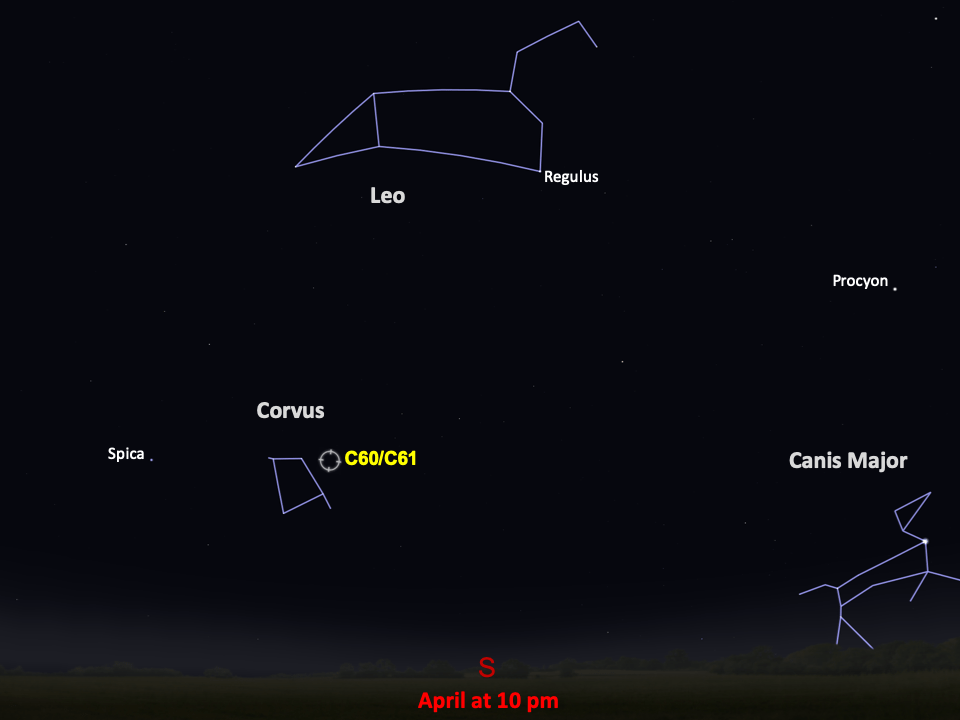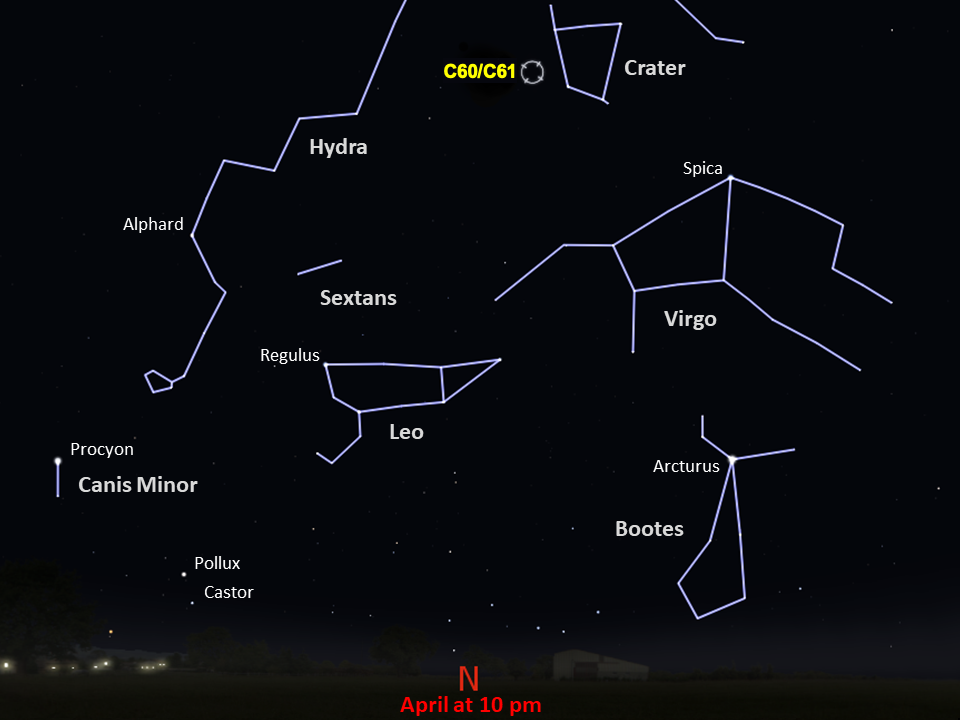Caldwell 60/61
Better known as the Antennae galaxies, Caldwell 60 and 61 are a pair of interacting spiral galaxies.
Distance
65 million light-years
Apparent Magnitude
10.5 and 11.0
constellation
Corvus
object type
Spiral Galaxies
This Hubble image shows two galaxies locked in a fateful embrace. Caldwell 60 (NGC 4038) and Caldwell 61 (NGC 4039) are known as the Ringtail or Antennae galaxies. At one time they were normal, sedate spiral galaxies similar to the Milky Way, but this galactic pair has spent the past few hundred million years sparring. This violent clash has ripped stars from their host galaxies to form a streaming arc between the two combatants. Wide-field views of the duo reveal long streamers of stars extending outward into space like a set of antennae, giving the duo their common nickname.
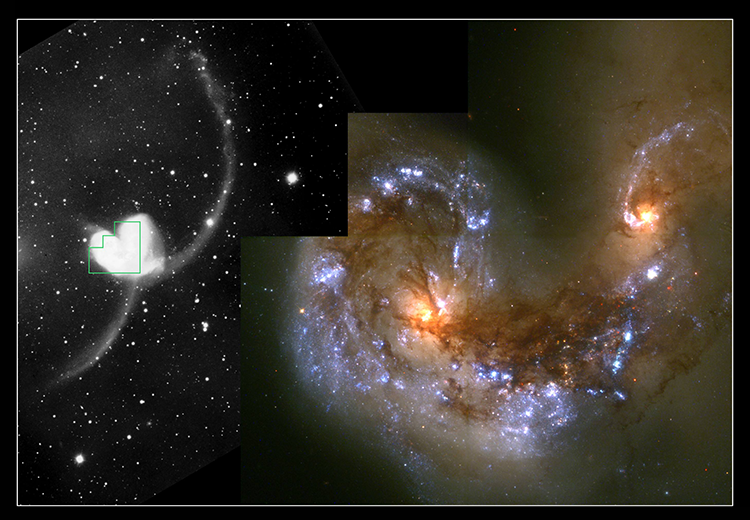
Hubble has targeted the Antennae galaxies multiple times over the years. Signs of chaos are obvious in this image released in 2013, which combines ultraviolet, visible, and infrared observations from Hubble’s Wide Field Camera 3 along with some previous observations from the Advanced Camera for Surveys. Blossoming clouds of pink and red gas cradle flashes of blue where new stars have just formed. Dark streaks of dust, pulled from the individual galaxies, sweep through and obscure vast parts of the scene.
Hubble’s observations have uncovered over a thousand bright, young star clusters bursting to life as a result of the head-on wreck. The sweeping spiral-like patterns, traced by these bright blue star clusters, show the result of a firestorm of star birth activity triggered by the collision. The extraordinary rate of star formation in the Antennae galaxies is known as a starburst, a period in which all of the gas within the galaxies is being used to form stars. Eventually this stellar inferno will burn itself out and the galaxies will settle down. The galactic cores will coalesce, and the once-separate galaxies will merge into one large elliptical galaxy.
The Antennae galaxies were discovered by astronomer William Herschel in 1785. They are located about 65 million light-years away in the Corvus constellation, best seen in autumn skies in the Southern Hemisphere but also visible in the springtime from the Northern Hemisphere. The galaxies have magnitudes of approximately 10.5 and 11, so a moderate to large telescope and dark skies are needed for optimal viewing. Even with a large telescope the Antennae galaxies will most likely resemble a faint, hazy comma.
For more information about Hubble’s observations of Caldwell 60 and 61, see:
Super Star Clusters in the Antennae Galaxies
Hubble Reveals Stellar Fireworks Accompanying Galaxy Collisions
A Galactic Spectacle
Glossary
Elliptical Galaxy - A nearly featureless, spherical or football-shaped galaxy, typically lacking new star formation and often containing much older stars than those in spiral galaxies.
Magnitude - The brightness of an astronomical object, represented by a number; bright objects have low numbers on the magnitude scale, while dim objects have high numbers.
Spiral Galaxy - A galaxy characterized by its spiral structure, with star-filled arms that extend out from the center of the galaxy and host regions of star formation.
Explore Hubble's Caldwell Catalog
The following pages contain some of Hubble’s best images of Caldwell objects.
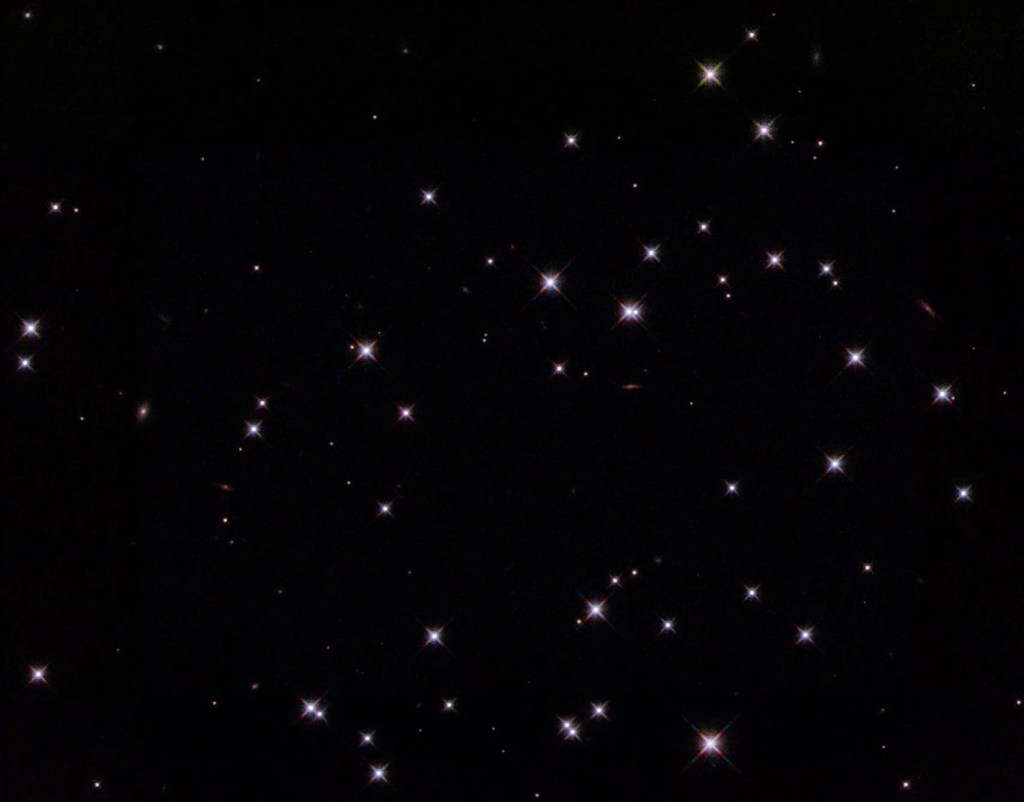
Also known as NGC 188, this group of stars formed from a large cloud of gas making the stars roughly…
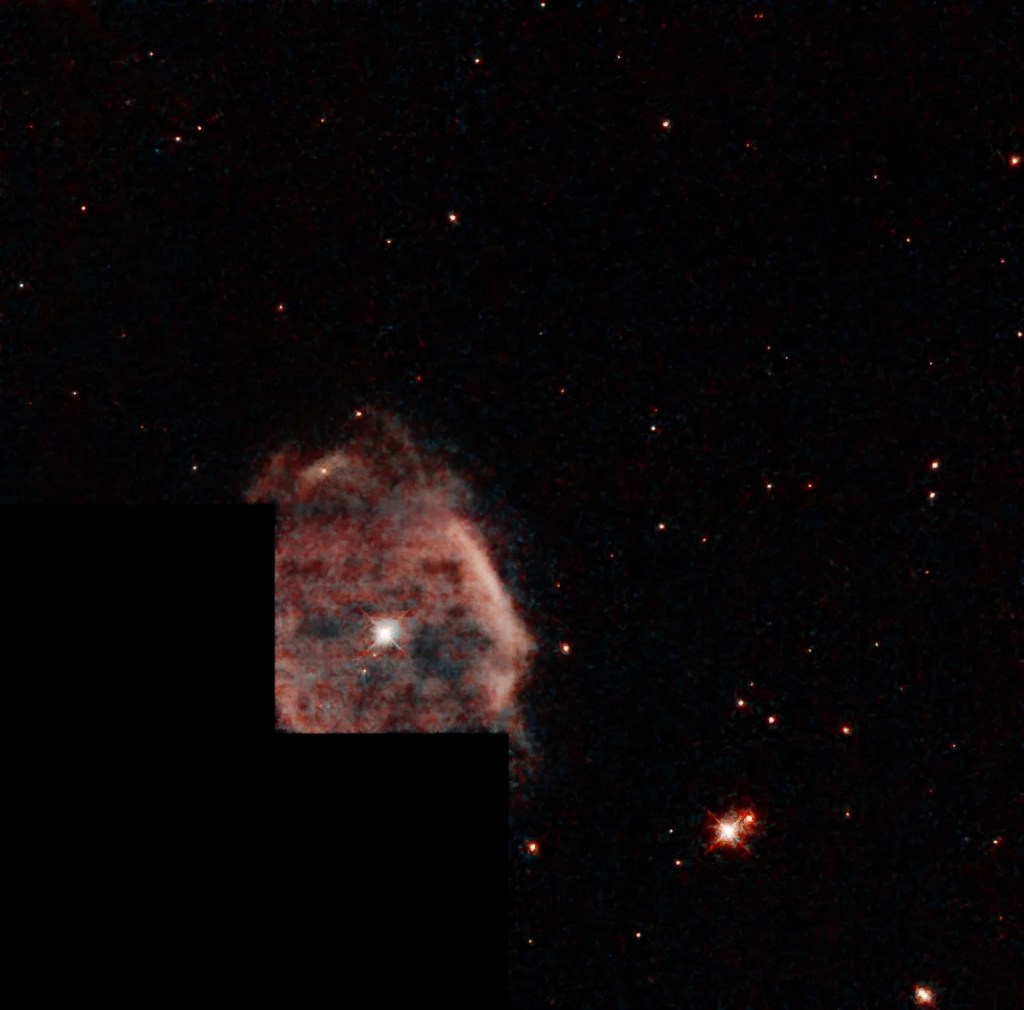
This shell of gas is expanding outward, away from the dying star within.
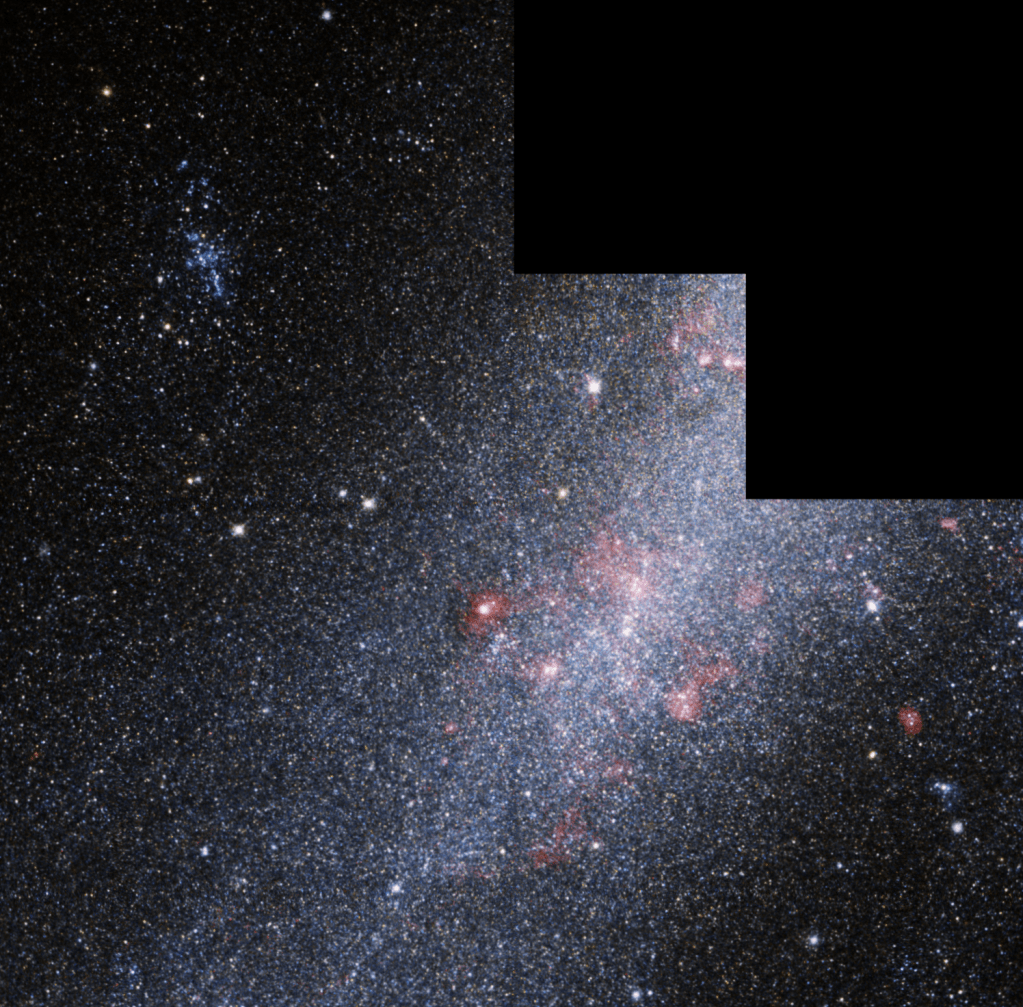
This barred spiral galaxy was first spotted by British astronomer William Herschel in April 1793 in the constellation Draco.

























